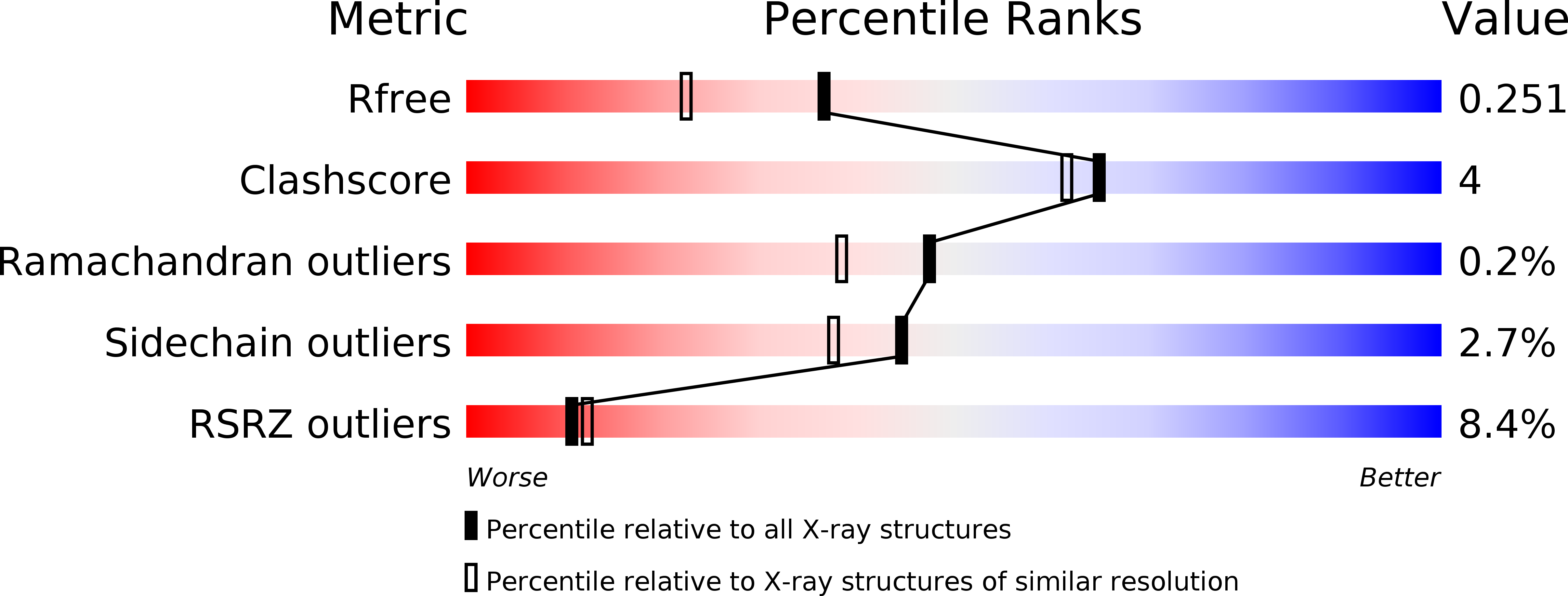Antibody 2G12 recognizes di-mannose equivalently in domain- and nondomain-exchanged forms but only binds the HIV-1 glycan shield if domain exchanged.
Doores, K.J., Fulton, Z., Huber, M., Wilson, I.A., Burton, D.R.(2010) J Virol 84: 10690-10699
- PubMed: 20702629
- DOI: https://doi.org/10.1128/JVI.01110-10
- Primary Citation of Related Structures:
3OAU - PubMed Abstract:
The broadly neutralizing anti-human immunodeficiency virus type 1 (HIV-1) antibody 2G12 targets the high-mannose cluster on the glycan shield of HIV-1. 2G12 has a unique V(H) domain-exchanged structure, with a multivalent binding surface that includes two primary glycan binding sites. The high-mannose cluster is an attractive target for HIV-1 vaccine design, but so far, no carbohydrate immunogen has elicited 2G12-like antibodies. Important questions remain as to how this domain exchange arose in 2G12 and how this unusual event conferred unexpected reactivity against the glycan shield of HIV-1. In order to address these questions, we generated a nondomain-exchanged variant of 2G12 to produce a conventional Y/T-shaped antibody through a single amino acid substitution (2G12 I19R) and showed that, as for the 2G12 wild type (2G12 WT), this antibody is able to recognize the same Man¦Á1,2Man motif on recombinant gp120, Candida albicans, and synthetic glycoconjugates. However, the nondomain-exchanged variant of 2G12 is unable to bind the cluster of mannose moieties on the surface of HIV-1. Crystallographic analysis of 2G12 I19R in complex with Man¦Á1,2Man revealed an adaptable hinge between V(H) and C(H)1 that enables the V(H) and V(L) domains to assemble in such a way that the configuration of the primary binding site and its interaction with disaccharide are remarkably similar in the nondomain-exchanged and domain-exchanged forms. Together with data that suggest that very few substitutions are required for domain exchange, the results suggest potential mechanisms for the evolution of domain-exchanged antibodies and immunization strategies for eliciting such antibodies.
Organizational Affiliation:
Department of Immunology and Microbial Science, The Scripps Research Institute, 10550 North Torrey Pines Road, La Jolla, CA 92037, USA.



















